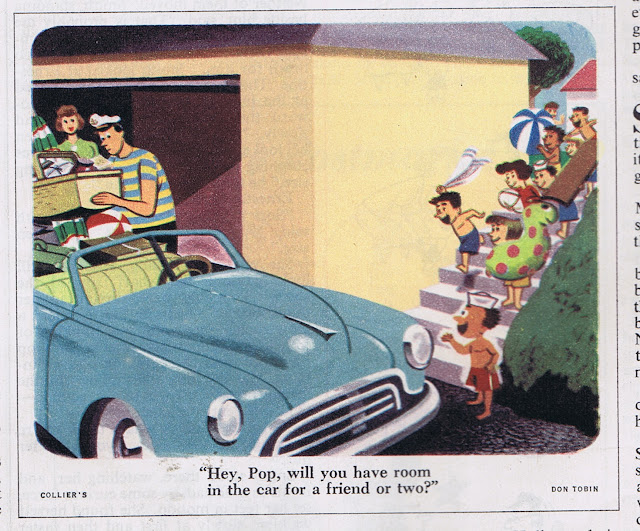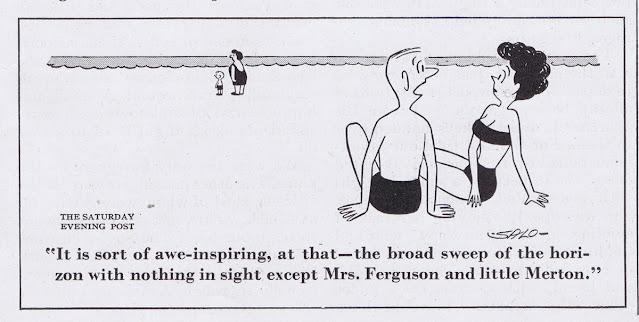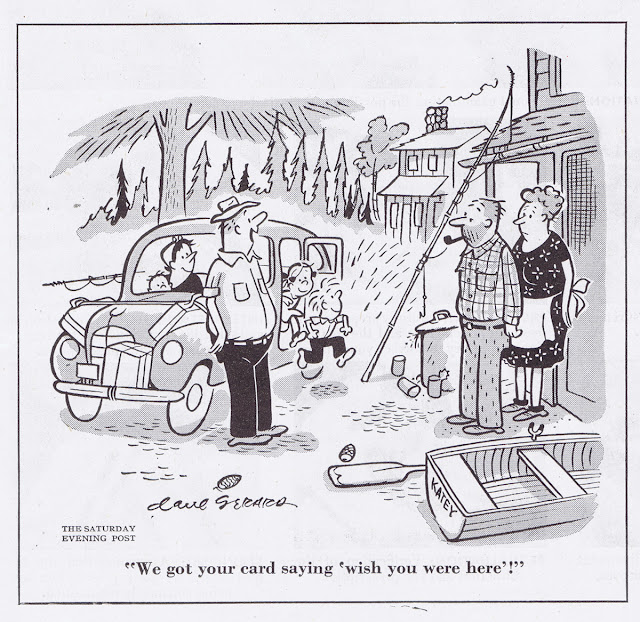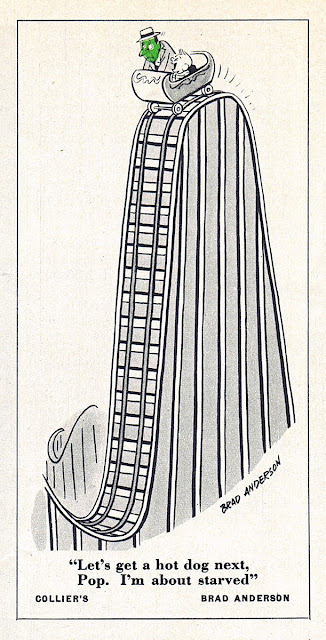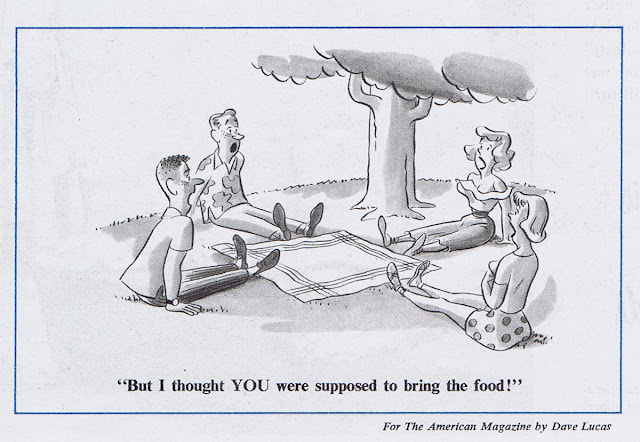Dick Buchanan has very kindly delved into his trove of vintage gag
cartoons to come up with a rare color selection on the theme of summer.
Thank you very much for these long-unseen single panel gems, Dick!
---
SUMMER CARTOONS
In GLORIOUS COLOR
1949 - 1954
Summer
is here! It’s time for going to the beach, amusement parks, boating,
swimming, gardening and baseball. And it’s hot. Since it’s never too
hot to laugh we have reached into the Cartoon Clip File and hauled out
some summer cartoons for the amusement of one and all. These cartoons
are in full color—clipped mostly from the pages of Collier’s. Here are
examples of some nifty summer themed drawings by some of the leading
mid-century cartoonists . . .
1. VIRGIL PARTCH. Collier’s July 1, 1950
2. DON TOBIN. Collier’s July 9, 1949.
3. DICK CAVALLI. Collier’s August 20, 1954.
4. GLENN BERNHARDT. Collier’s July 1, 1950.
5. TED KEY. The Saturday Evening Post July 30, 1949.
6. KATE OSANN. Collier’s July 9, 1949.
7. BARNEY TOBEY. Collier’s August 12, 1950.
8. GUSTAV LUNDBERG. Collier’s July 2, 1949.
9. KIRK STILES. Collier’s July 18, 1953.
10. FRITZ WILKINSON. Collier’s September 10, 1949.
11. KATE OSANN. Collier’s July 2, 1949.
12. BARNEY TOBEY. Collier’s August 19, 1950
13. MARY GIBSON. Collier’s July 21, 1951.
14. TED KEY. The Saturday Evening Post July 19, 1950.
15. HANK KETCHAM. Collier’s July 1, 1950.
-- Edited from a June 27, 2018 blog entry.


